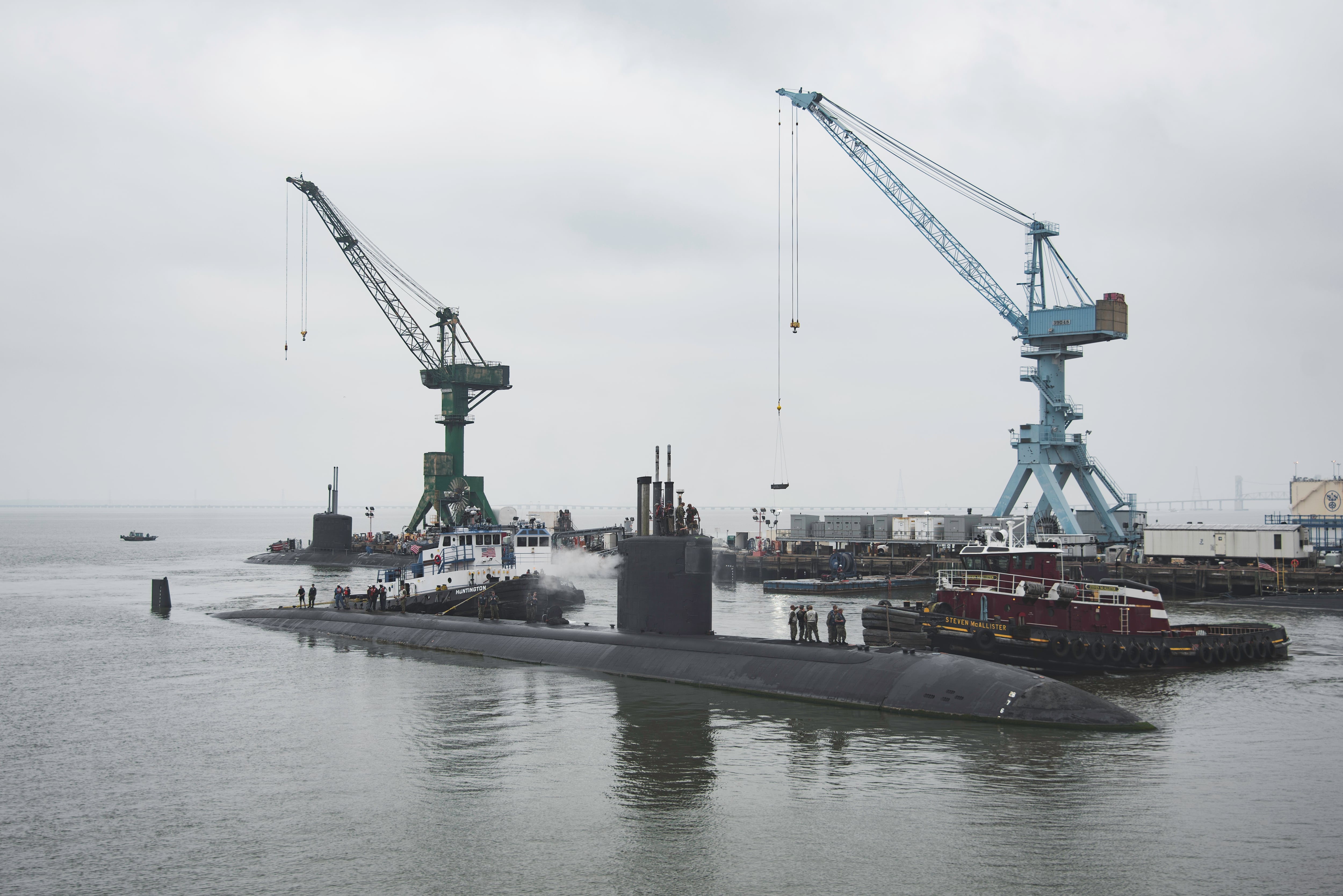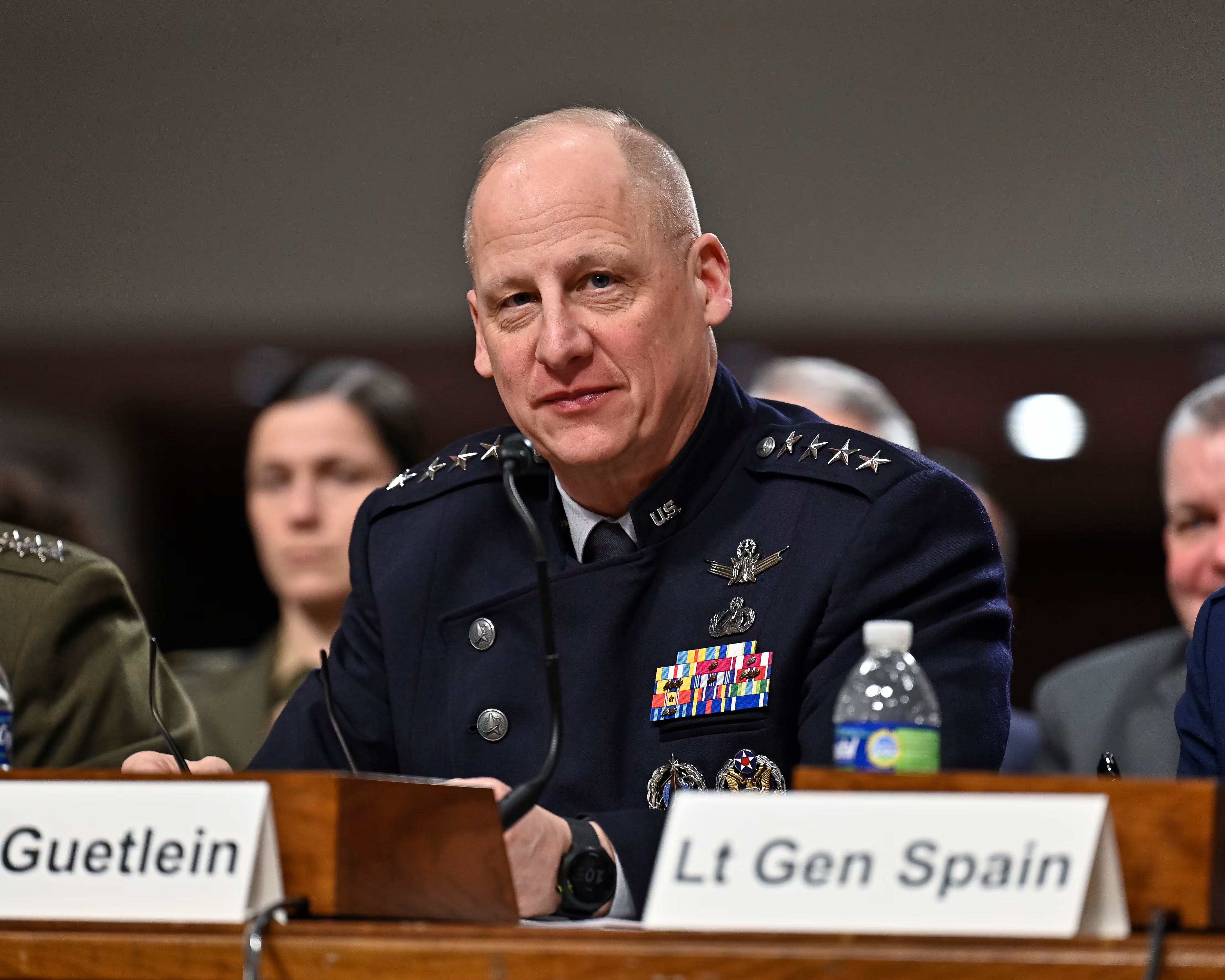WASHINGTON — As the U.S. Navy pushes forward with developing its large unmanned surface vessel, envisioned as a kind of external missile magazine that will tag along with larger manned surface combatants, a growing consensus is forming that the service needs to get its requirements and systems right before making a big investment.
Congress has, for the second year in a row, slowed the development of the large unmanned surface vessel, or LUSV, in the 2020 National Defense Authorization Act. The language in this year’s bill would essentially force the Navy to have a working prototype with all systems tested and fully integrated before using procurement dollars for the boats.
In an exclusive July 16 interview with Defense News, Chief of Naval Operations Adm. Michael Gilday said that while the marks were frustrating, he agreed with Congress that requirements must be concrete right up front.
“The approach has to be deliberate,” Gilday said. “We have to make sure that the systems that are on those unmanned systems with respect to the [hull, mechanical and electrical system], that they are designed to requirement, and perform to requirement. And most importantly, are those requirements sound?
RELATED

“I go back to: Do I really need a littoral combat ship to go 40 knots? That’s going to drive the entire design of the ship, not just the engineering plant but how it’s built. That becomes a critical factor. If you take your eye off the ball with respect to requirements, you can find yourself drifting. That has to be deliberate.”
Gilday has called for the Navy to pursue a comprehensive “Unmanned Campaign Plan” that creates a path forward for developing and fielding unmanned systems in the air, on the sea and under the water. Right now, the effort exists in a number of different programs that may not all be pulling in the same direction, he said.
“What I’ve found is that we didn’t necessarily have the rigor that’s required across a number of programs that would bring those together in a way that’s driven toward objectives with milestones,” Gilday told Defense News. “If you took a look at [all the programs], where are there similarities and where are there differences? Where am I making progress in meeting conditions and meeting milestones that we can leverage in other experiments?
“At what point do I reach a decision point where I drop a program and double down on a program that I can accelerate?”
‘A lot of risk’
According to the Congressional Research Service, the Navy’s approach is to adapt a commercial design and put a bare-bones crew onboard while the service figures out how to move toward a fully unmanned system.
“The Navy wants LUSVs to be low-cost, high-endurance, reconfigurable ships based on commercial ship designs, with ample capacity for carrying various modular payloads — particularly anti-surface warfare (ASuW) and strike payloads, meaning principally anti-ship and land-attack missiles,” the report read.

But some very basic questions still need to be answered about how a large unmanned, or lightly manned, surface vessel might work, said Matthew Collette, an associate professor of naval architecture and marine engineering at the University of Michigan.
“One of the biggest challenges people are realizing now is the machinery systems and keeping the systems operational for six months [over a deployment],” Collette said. “If you think about a ship today, there are daily machinery rounds and constant preventative maintenance. The Navy has its casualty reporting system, and the commercial world has something very similar. And over six months, that’s a lot of work that’s not getting done on the autonomous ship.
“And there are two approaches to this that I’ve seen: One is you design it essentially like a space craft where you really limit what you do with the ship to make it as robust as possible and really accept that today that means less capability. We’re just not going to be able to throw all the bells and whistles on that kind of a ship today. And for the smaller size ships, that’s a good approach.
“But the other approach is to try and monitor it and put in a lot of redundancy and figure out how we get this system reimagined so it can do a six-month deployment. And I can’t really assess where we are with that at this point, I just don’t have enough insight to know if that’s six months away. Is it six years? Is it never reachable?”
It’s unclear that adapting an existing design will get the Navy where it needs to be, in large part because the Navy is going somewhere radically different from what the commercial offshore oil and gas or ferry industry is going, Collette said.
“It’s important to note that where the commercial industry is going is different from where the Navy wants to go,” Collette said. “In the commercial marine industry, you have a licensed captain ashore who is able to teleport to the ship whenever it needs human intervention. And we’re really talking about short runs, like inter-European runs of six hours, 12 hours, and working their way out from there.
“The Navy has really asked for a much harder, much more difficult problem. And you could see how something like the [extra-large unmanned underwater vehicle] as a technology trail that works toward this direction, but jumping toward something like large unmanned surface vessel, is a big, big step with a lot of risk.”
David B. Larter was the naval warfare reporter for Defense News.








